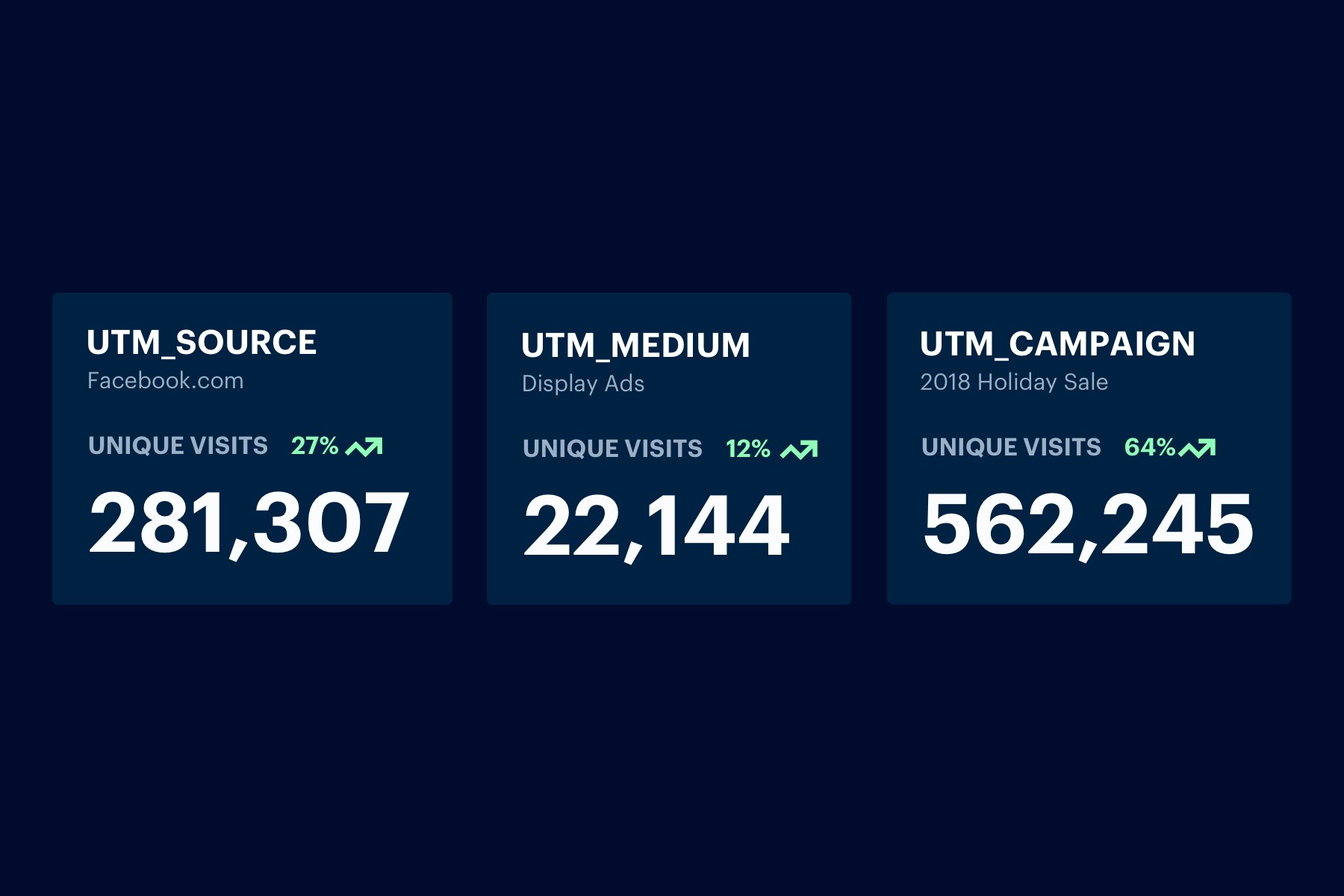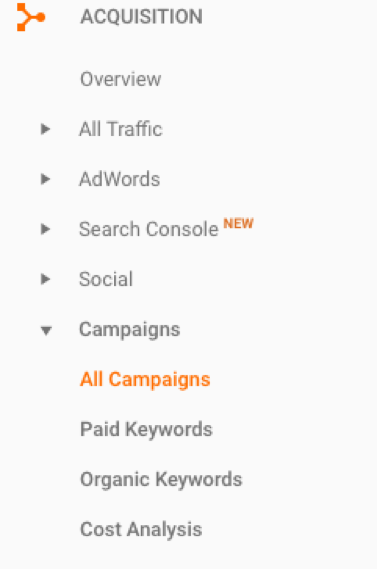Chapter 9
Setting Up Unique Parameters

Once you've enabled Demographic reporting for more insight into your audience, you can start creating custom campaigns and tracking their progress in Analytics.
Adding campaign parameters to your campaign destination URLs will help you analyze how effective those campaigns are for your site traffic and sales. They can show which medium brings the most ROI, if you're running your campaign across different platforms, to help maximize your budget.
Setting these parameters in Analytics will allow you to review your information easily in the Campaign tab. In this chapter, we'll review how to set these up.
Adding Parameters to Campaign URLs
There are five parameters you can add to your URLs:
- utmsource: The site or publication that is sending traffic (ex: facebook.com, Washington Post)
- utmmedium: The marketing medium (ex: display, email campaign)
- utmcampaign: Your naming convention for the specific campaign (ex: holiday sale)
- utmterm: Specify the keyword you're using for paid search campaigns
- utmcontent: Differentiate similar content or call-to-action links within the same campaign to determine effectiveness
Note that both utm_term and utm_content are optional. You should identify the value of each parameter you use before setting up your URLs and keep track of these campaigns and parameters in a separate document. An example of an email campaign for a holiday sale could look like:
https://www.mysite.com.?utm_source=holiday-email&utm_medium=email&utm_campaign=holiday-sale
You can add parameters and their values to destination URLs if you have the webmaster access within your site, or you can use URL-builder sites like this one to build your custom URLs.
Viewing Custom Campaigns in Analytics
Once your parameters are added to your URLs and they're live on your site and in your advertising, you can navigate to this information under your Acquisitions tab:

Here you can dive into the separate campaigns created to see how they perform site-wide, from traffic to engagement to conversion.